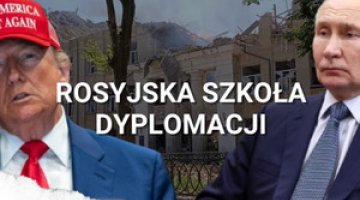The stable crisis. Ukraine’s economy three years after the Euromaidan
The economic statistics for 2016 indicate that Ukraine has managed to overcome the toughest phase of the economic crisis. For the first time in four years, the Ukrainian economy recorded a positive growth rate of around 2%[1]. This is due to the reforms launched in the first months following the EuroMaidan and of the implementation of the reconstruction programme under pressure from Western lenders, mainly the International Monetary Fund (IMF) and the EU. In addition, the favourable situation on global commodity markets and the drop in the price of energy resources, as well as good weather conditions which enabled record high grain harvest and an all-time-high export of grains, have had a positive impact on the Ukrainian economy. Economic growth has accompanied the stabilisation of the macroeconomic situation, which manifests itself, for example, in halting the slide in the hryvnia in concert with the gradual replenishment of foreign exchange reserves, the favourable balancing of budgetary revenues and spending (the deficit of around 3% GDP), maintaining the expected level of inflation and the improvement of the situation in the banking sector.
These achievements, however, are unimpressive when viewed in the context of the scale of the crisis which affected Ukraine in 2014 and 2015, when the cumulative decline in GDP was 16.5%. Growth was recorded in the key sectors of the economy merely as a result of a low reference base. Moreover, the stabilisation of state finances has curbed the drive to carry out reforms by the part of the ruling elite and fostered a return to nebulous financial schemes in which the highest-ranking politicians are involved. The war in the Donbas, alongside the lasting systemic corruption, insufficient deregulation of the economy and the lack of reform of the judiciary, contribute to limiting both the inflow of foreign investments and the development of the business sector. In 2017, sustaining the rate of economic growth will mainly depend on factors beyond Ukraine’s control such as the situation on foreign markets and the weather conditions, as well as on the development of the situation in that part of the Donbas which is not controlled by Kyiv and on the so-called demarcation line. In an optimistic scenario, which assumes a status quo in the eastern part of the country, continued slow pace of reforms and cooperation with the IMF, Ukraine’s macroeconomic situation will remain stable and its GDP growth rate will continue to be around 2–3%.
The key macroeconomic data
The stabilisation of the financial situation and a return to growth should be considered the biggest successes of the economic policy achieved last year. The main reasons behind these successes was the relatively stable political situation in Ukraine, the relative de-escalation of military activity in the Donbas, the favourable situation on foreign markets and the results of the reforms[2]. As a consequence, in Q4 2016 Ukraine’s GDP rose by 1.9% against the previous three months and by 4.7% when compared to Q4 2015. Available data prompts a forecast that the total GDP growth rate for 2016 will be around 2%, which is higher than the estimates offered by the IMF and the National Bank of Ukraine (NBU) in November 2016, standing at 1.5% and 1.1% respectively.
The NBU’s monetary policy should also be considered a success. It maintained the previously set inflation level and the floating exchange rate of the hryvnia, which made it possible to halt the devaluation trend and to increase foreign exchange reserves. As a consequence, in 2016 the average exchange rate was 25.5 hryvnias for one US dollar[3], which constitutes an 80% reduction in the rate of hryvnia devaluation as compared to 2015. At the same time, Ukraine’s foreign exchange reserves increased by 17%, reaching the level of US$ 15.5 billion at the end of 2016, a two-fold increase as compared to the end of the crisis year 2014 (US$ 7.5 billion[4]). The restrictive policy of the NBU, which manifested itself, for instance, in maintaining a relatively high base rate (14%) at the end of 2016, alongside certain limitations in currency trading for banks and exporters, made it possible to reduce the inflation rate to 12.4% at the end of 2016, whereas in 2015 the inflation rate stood at 43%. The increase in prices had mainly been caused by subsequent stages of the price rises for gas, electricity and heating for industrial recipients, including producers of goods and services.
This trend was halted due to various factors, including external ones such as the import ban imposed by Russia (see below), which contributed to an increase in the supply of foodstuffs on the Ukrainian domestic market and, as a result, to a drop in their prices. At the same time Ukraine failed to attract major foreign investments. There were several positive initiatives including the US$ 75 million investment carried out in the Lviv oblast by the Japanese company Fujikura[5], but this was an exception. In 2016, the total value of foreign direct investment amounted to US$ 4.4 billion although65% of this was in the form of investment in the finance and insurance sector (US$ 2.8 billion), including a staggering US$ 1.6 billion transferred by Russian banks as additional capital for their Ukrainian subsidiaries[6].
Stabilisation of the macroeconomic situation probably would not have been possible without Ukraine’s close cooperation with the IMF under the so-called extended fund facility[7]. In line with its provisions, subsequent instalments of the US$ 17.5 billion loan extended to Ukraine are conditional upon various government bodies – mainly the Ministry of Finance and the NBU – implementing further reforms and changes in the monetary and financial policy. At the same time, the IMF loans and other loans extended to Ukraine (for example by the EU and Japan) alongside loan guarantees (offered by the USA) have contributed to an increase in Ukraine’s debt. According to data from the Ministry of Finance, at the end of 2016 the state’s debt and the debt guaranteed by the state stood at US$ 71 billion (1.9 trillion hryvnias), accounting for 82% of Ukraine’s GDP[8]. Ukraine’s US$ 3 billion debt to Russia, resulting from loans taken out by former president Viktor Yanukovych back in December 2013, continues to be a problem. Moscow did not consent to restructuring of this debt and Kyiv refused to repay it on time. In this situation, Moscow brought the case to the High Court in London. In March 2017, the court issued a verdict which was unfavourable to Ukraine, although it granted Kyiv the right to appeal. Ukraine will most likely lodge such an appeal because it is interested in prolonging the proceedings.
Good news from the sectors of metallurgy and agriculture
In 2016, the 2.4 % increase in industrial output, as compared to 2015, was one of the most encouraging results recorded by the Ukrainian economy. It was particularly evident in the metallurgical sector (+6%), which enabled Ukraine to be ranked tenth on the list of the world’s largest producers of steel (24.2 million tonnes)[9]. The production increase was possible due to a rise in the scrap metal export tariff from 10% to 30%, which impacted the availability of domestic scrap metal and contributed to an expansion of the range of goods produced by metallurgical conglomerates. At the same time, maintaining the upward trend in the metallurgical sector is uncertain due to the ‘social’ blockade of traffic between the areas of the Donbas that remain outside Kyiv’s control and the rest of Ukraine, which has been ongoing since the end of January 2017. The blockade is resulting in a shortage of coal which, in its enriched form, is a key material used in the production of steel. It has already caused a halt in the operation of the Yenakiieve and Alchevsk metallurgical conglomerates and reduction of production in the Metinvest and Industrialnyi Soyuz Donbasa holdings. In February 2017, the losses were estimated at around US$ 160 million per month (US$ 2 billion annually, or 5% of Ukraine’s total exports)[10]. In early March, the energy company DTEK announced that it had halted the operation of its major coal mines located in the part of the Donbas not controlled by Kyiv[11]. The Ukrainian leadership’s decision of 15 March, involving the suspension of freight traffic across the demarcation line[12], will likely aggravate the problems affecting the Ukrainian metallurgical sector and undermine the prospects of coal mines and other heavy industry plants located in areas not controlled by Kyiv, which were taken over by the so-called separatists in early March[13].
Due to favourable weather conditions, Ukrainian agriculture was enormously successful in 2016. The grain harvest was a record high – 66 million tonnes (up by 9% versus 2015), involving mainly corn (28 million tonnes) and wheat (26 million tonnes)[14]. The bumper harvest enabled record high exports. Over the last so-called marketing year (July 2015 – June 2016), Ukrainian producers sold 39 million tonnes of grains to their foreign contractors, up by 13% compared to the preceding season. Positive results recorded by Ukrainian agro-holdings[15] facilitated their return to foreign financial markets. In January 2017, for the first time since the outbreak of the war in eastern Ukraine, Kernel[16], the leading producer of sunflower oil, sold Eurobonds worth US$ 0.5 billion (with an annual yield of 8.8%). Despite these developments, the agricultural sector is still struggling with problems. The most significant ones include the modest state support for farmers (in the 2017 budget 4 billion hryvnias have been earmarked for subsidies and 1.5 billion hryvnias for investments – in total around US$ 200 million[17]), limited lending activity by Ukrainian banks and high costs of loans, as well as limited access to Ukrainian fertilisers and the need to import more expensive ones from Russia. In the nitrogen fertilisers segment, Russian products have a market share above 25% and the government is making preparations to introduce anti-dumping tariffs on these products. In 2017, agricultural companies will no longer be eligible for exemptions in VAT repayment and will be subject to general taxation rules, which in turn will increase their operational costs. Moreover, in autumn 2016 President Poroshenko signed a law extending the moratorium on trade in arable land[18] to 2017, which will limit the inflow of investment (according to the deputy minister of agriculture the losses resulting from the moratorium are estimated at US$ 3.3 billion annually, or more than 3.5% of Ukraine’s GDP[19]).
Foreign trade: imports up, exports down
Exports are of key importance for the Ukrainian economy because they generate up to half of the country’s GDP. In 2016, as compared to 2015, a negligible decrease in trade turnover was recorded, with exports shrinking by 4% and imports rising by 3.7%[20]. The total value of Ukraine’s trade exchange (goods and services) was almost US$ 90 billion and the positive trade balance was a mere US$ 337 million (US$ 3.8 billion in 2015). The usual driving forces behind Ukrainian exports are products from the agro-industrial sector, including foodstuffs, and metallurgical products. In 2016, the sale of agricultural produce to foreign recipients rose by 4.5% to US$ 15.5 billion and increased its share in Ukraine’s total export of goods to 42%[21]. Asian countries remain the principal recipients of Ukrainian agricultural produce (46%) and Africa, Egypt in particular, is becoming an increasingly popular destination (15.7%). In 2016, according to information from the Ukrainian government, Ukraine was one of the top three suppliers of agricultural produce to the EU[22]. Metallurgy, for its part, is the second most important sector of the economy from the point of view of Ukraine’s exports (accounting for 23% of total exports) and one of the main sources of foreign currency. Increased production alongside the rise in the price of steel on global markets have made it possible to reduce the rate of decline in sales of metallurgical products to foreign recipients (to -12% in 2016 versus -38% in 2015) and the falling currency revenues related to it.
The main cause for the drop in trade turnover has been the limitation of trade with Russia. In 2016, the imports of goods from this country fell by another 31% and exports declined by 25.6%[23]. Despite this, Russia continues to be Ukraine’s main trade partner (9.9% of its exports and 13% of imports). The reason behind this decrease has been Russia’s military aggression in eastern Ukraine and tense political relations, which triggered the escalation of the trade war launched by Moscow back in August 2013. In 2016, the Kremlin expanded its embargo on the import of products from the Ukrainian agro-industrial sector and imposed restrictions, practically tantamount to a ban, on the transit of Ukrainian goods via Russia, which affected Ukraine’s exports to Central Asia and China. Moreover, the Kremlin has unilaterally terminated the free trade agreement within the CIS[24]. In 2016, the conflict with Russia and the temporary introduction on 1 January 2016 of the provisions of the Deep and comprehensive free trade agreement with the EU (DCFTA) resulted in a rise in Ukrainian exports to the EU (of 3.7%) and in the EU’s share in the structure of recipients of Ukrainian goods and services (37%).
Prospects
No major acceleration of Ukraine’s economic growth should be expected in 2017. The reforms carried out so far have not been sufficiently deep to improve Ukraine’s rating in major rankings such as Fitch, S&P and Doing Business, and thereby to make the Ukrainian economy more attractive to foreign investors. This is one of the reasons why in 2016 only 1% (190 million hryvnias out of the planned 17 billion[25]) of the privatisation plans were implemented . The sale of the most significant assets was postponed for 2017, although no breakthrough in privatisation should be expected due to foreign investors’ continued reluctance to invest in Ukraine and to insufficient capital on the part of domestic investors.
As a consequence, the minor growth of the Ukrainian economy in 2017 will result from the expected increase in domestic consumption, stemming from a two-fold rise in the minimum wage to 3200 hryvnias (US$ 110) and from the increased export of agricultural produce whose share in total exports will likely continue to rise. Ukraine’s economic growth will strongly depend on external factors such as the situation on foreign markets, continued cooperation with the IMF and other lenders and on the stabilisation of the military situation in the eastern part of the country.
For a real boost in Ukraine’s economic development to be possible, the pace of reforms would need to be increased by implementing the laws already in place and adopting further laws, such as those involving the reform of the judiciary and the public prosecutor’s office. In addition, continued deregulation of the economy would be necessary alongside effective measures to combat corruption. Recent months have seen a rapid decline in the pace of reforms in Ukraine. Paradoxically, this mainly results from the relative stabilisation of the economic situation and the increased tension in domestic politics. Ukrainian politicians are increasingly focused on two upcoming elections – the presidential and parliamentary elections in 2019, which negatively impacts their eagerness to implement reforms.
Appendix
Ukraine’s basic macroeconomic indicators
1. Foreign exchange reserves, in US$ billions

Source: National Bank of Ukraine
2. Inflation rate, %

Source: Ukrstat
3. Base rate, %

Source: National Bank of Ukraine
4. Foreign trade balance, in US$ billions

Source: Ukrstat
5. Ukraine in international rankings (2016)

[1] Data compiled by the State Statistics Service of Ukraine. Aggregate and official data for the entire 2016 have not been published so far. In 2012, Ukraine’s GDP rose by a mere 0.2% and in 2013 the growth rate was 0%.
[2] The aim of this text is not to offer an assessment of the reform process in Ukraine, but to present the country’s economic situation which largely depends on these reforms. It should be remembered, however, that it is not only the reforms that determine this situation. More on the reforms see W. Konończuk, T. Iwański, T.A. Olszański, P. Żochowski, The bumpy road. Difficult reform process in Ukraine, OSW Commentary, 3 December 2015, https://www.osw.waw.pl/en/publikacje/osw-commentary/2015-12-03/bumpy-road-difficult-reform-process-ukraine
[3] The dynamics of major macroeconomic indicators is presented in the Appendix.
[4] Although as on 1 January 2013 the figure was US$ 24 billion.
[5] http://www.epravda.com.ua/news/2016/09/30/607225/
[6] Cyprus was ranked second (US$ 427 million), which most frequently means that Ukrainian capital is reinvested by off-shore companies registered in Cyprus; https://www.epravda.com.ua/news/2017/03/1/622136/
[7] For more see R. Sadowski, Nowy program pomocy MFW dla Ukrainy, Analizy OSW, 12 February 2015, https://www.osw.waw.pl/pl/publikacje/analizy/2015-02-12/nowy-program-pomocy-mfw-dla-ukrainy
[8] http://espreso.tv/news/2017/02/03/derzhborg_ukrayiny_za_rik_zris_do_71_mlrd
[9] https://economics.unian.ua/industry/1743667-ukrajina-za-pidsumkami-roku-zberegla-10-te-mistse-v-svitovomu-reytingu-virobnikiv-stali-infografika.html
[11] http://www.epravda.com.ua/news/2017/03/10/622495/
[12] T. A. Olszański, Poroshenko authorises a blockade of the Donbas, OSW Analyses, 22 March 2017, https://www.osw.waw.pl/en/publikacje/analyses/2017-03-22/poroshenko-authorises-a-blockade-donbas
[13] No detailed information is available, which de facto means that these companies have been taken over by the so-called separatists, http://www.pravda.com.ua/news/2017/03/1/7136784/
[14] http://minagro.gov.ua/uk/node/22985
[15] For more on Ukraine’s agriculture see A. Sarna, The transformation of agriculture in Ukraine: From collective farms to agroholdings, OSW Commentary, 7 February 2014, https://www.osw.waw.pl/en/publikacje/osw-commentary/2014-02-07/transformation-agriculture-ukraine-collective-farms-to
[16] Kernel is listed on the Warsaw Stock Exchange, in 2016 it reported net profit of US$ 225 million.
[17] https://agropolit.com/spetsproekty/217-agrarniy-byudjet-2017-vidjatisya-i-stati-efektivnishim-chi-pomerti
[18] In practice this means that unrestricted trade in arable land will be suspended at least until 1 January 2018.
[19] http://forbes.net.ua/ua/opinions/1426443-perspektivi-2017-chogo-chekati-ukrayinskomu-apk-v-novomu-roci
[20] Data in this section quoted after Ukrstat unless otherwise indicated.
[21] Data compiled by the Ministry of Agriculture, http://minagro.gov.ua/uk/node/23131
[22] http://www.eurointegration.com.ua/news/2017/03/7/7062659/
[23] A decrease in trade exchange with Russia has continued since 2012 but it accelerated considerably over the last three years.
[24] Fore more on this see W. Górecki, cooperation T. Iwański, Pakiet rosyjskich sankcji wobec Ukrainy, Analizy OSW, 13 January 2016, https://www.osw.waw.pl/pl/publikacje/analizy/2016-01-13/pakiet-rosyjskich-sankcji-wobec-ukrainy
[25] https://www.epravda.com.ua/news/2017/01/23/618490/





